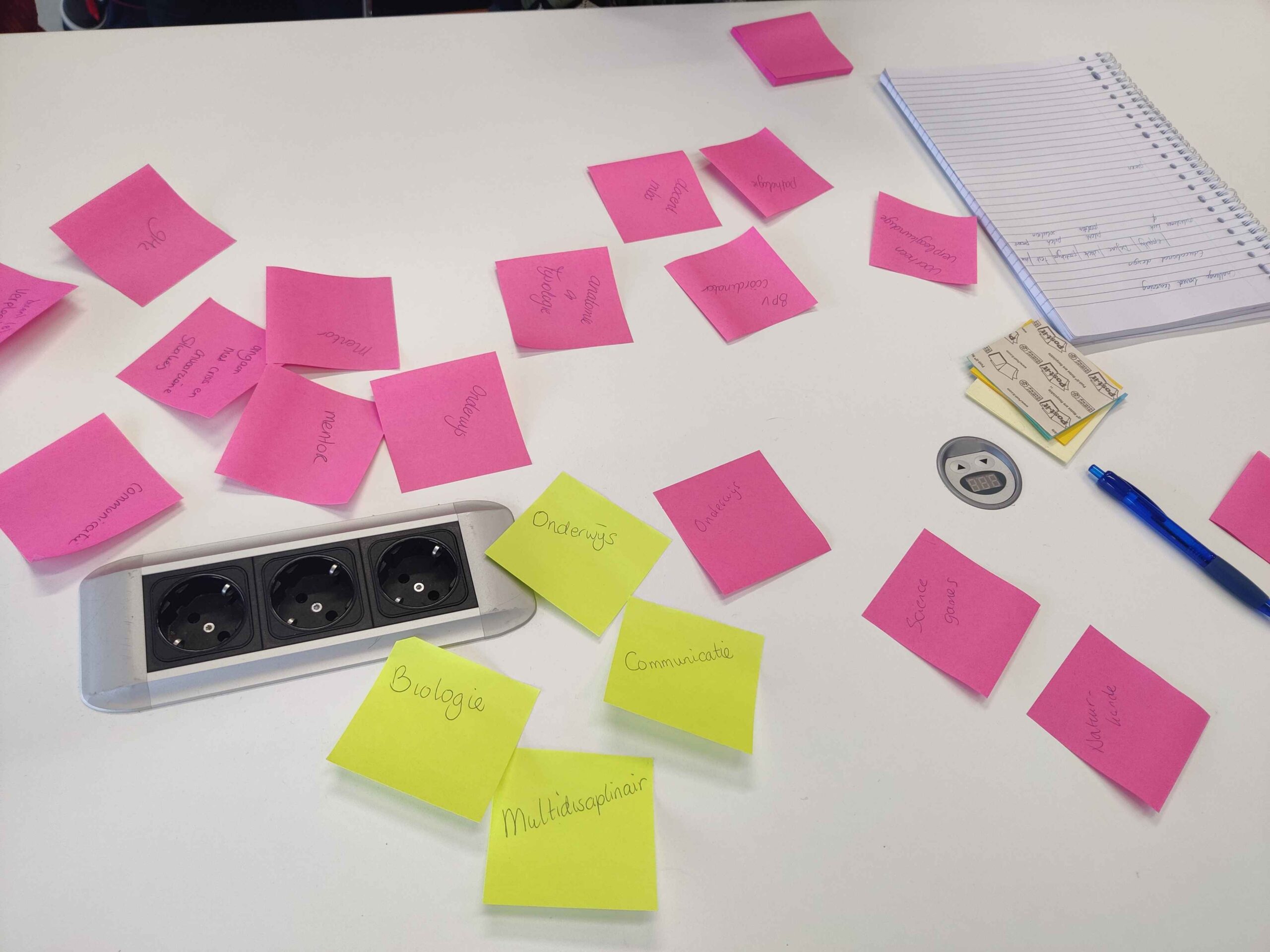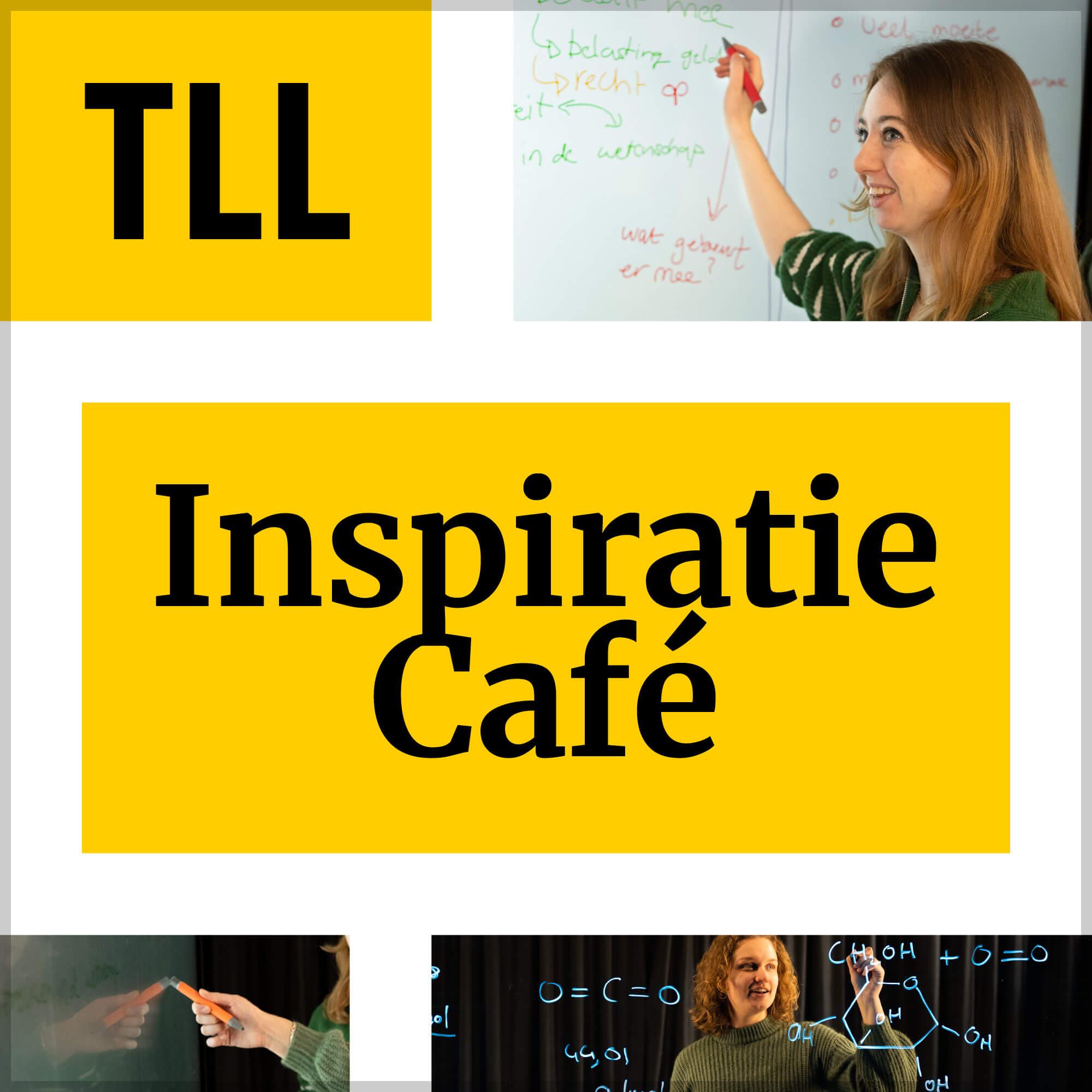News
Looking back on the Inspiration Café – Challenge Based Learning
This time, the Inspiration Café was organized by Minke Brinkman and Dimitra Mousa. The theme of the day was Challenge Based Learning (CBL): a pedagogical approach that allows students to conceptualize and investigate real-world problems and challenges. CBL provides teachers and professors with tools to structure their lessons in a transdisciplinary manner, thus creating a valuable and rich curriculum. Not only are students involved, but also multidisciplinary stakeholders.
Details of CBL
CBL incorporates elements related to global themes and real-world problems. Students are expected to apply elements of collaboration, flexibility, and the use of modern technology while enjoying a multidisciplinary approach. Additionally, innovation and creativity are ensured. It is up to the course coordinator to bring together and implement these elements of Challenge Based Learning in their teaching approach.
The course coordinator is a crucial player in CBL but does not work alone. The lesson setup involves various players: CBL coaches, content experts, skill trainers, societal and business partners, and the CBL students. The course coordinator oversees the process in which these roles interact. Skill trainers may facilitate workshops in communication or collaboration, while societal and business partners connect students with society.
The course structure of CBL
A ten-week course with CBL follows a ‘double diamond’ structure, where the first phase leads to the pitch of a problem, and the second phase concludes with presenting a solution (Fig. 1). Students start in a kick-off phase where groups of 5 students are formed. In teams, group members connect personal expertise and experiences to define an interesting problem. After pitching the challenge, the elaboration phase, including a testing phase, follows. After this testing phase, the solution will be presented to interested parties such as fellow students and other CBL players.

Figure 1: The double diamond structure of a +/- 10-week course.
Group size plays a significant role in CBL. The presenters shared that the implementation of this pedagogical approach was successful with groups of both 20 and 80 students. In Eindhoven, there is even a case of a course with 200 students where CBL proved to be an effective teaching method. A group size of 5 students is ideal – the presenters stated that decision-making becomes cumbersome with more than five, and with a smaller group, the consequences of dropouts are significant. According to them, the best coaching also comes through in bi-weekly meetings with a supervisor.
The CBL workshop
Now that we have understood what CBL entails, it was up to us to formulate a challenge ourselves. To start, our heterogeneous group had to come up with a big idea, which we did by sticking our own post-it notes with keywords (Fig, 2). From this, we deduced that it was about Dutch education. This was followed by an essential question about this idea: What adjustments can we make to secondary education to reduce teacher shortages? The question presents us with the challenge: how do you address teacher shortages?

Figure 2: Brainstorming session (empathy phase) for our big idea.
Since we didn’t have ten weeks for this Inspiration Café, we unfortunately couldn’t solve this problem. However, the interactive addition of this presentation gave us a good idea of what CBL offers to students, teachers, and all involved players. Does this Inspiration Café also excite you about this pedagogical approach? CBL coach courses are available where UU employees can also enroll. For more information, contact Minke Brinkman or Dimitra Mousa, or take a look at the website.

